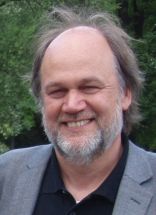Prof. Dr. Volker Grimm
Contact
Helmholtz Centre for Environmental Research - UFZ
Department Ecological Modelling
Permoserstr. 15
04318 Leipzig
Germany
Building 1.0, Room 208 map
Tel.: +49 341 235-1711
Fax: +49 341 235-1473
volker.grimm .. ufz.de

Research Interests
- How to model it: Ecological models, in particular simulation models, often seem to be formulated ad hoc and only poorly analysed. I am therefore interested in strategies and methods for making ecological modelling more coherent and efficient. The ultimate aim is to develop preditive models that provide mechanstic understanding of ecological systems and that are transparent and structurally realistic enough to support environmental decision making.
- Pattern-oriented modelling: This is a general strategy of using multiple patterns observed in real systems as multiple criteria for chosing model structure, selecting among alternative submodels, and inversely determining entire sets of unknown model parameters.
- Individual-based and agent-based modelling: For many, if not most, ecological questions individual-level aspects can be decisive for explaining system-level behavior. IBM/ABMs allow to represent individual heterogeneity, local interactions, and/or adaptive behaviour
- Ecological theory and concepts: I am particularly interested in exploring stability properties like resilience and persistence.
- Modelling for ecological applications: Pattern-oriented modelling allows to develop structurally realistic models, which can be used to support decision making and the management of biodiversity and natural resources. Currently, I am involved in the EU project CREAM, where a suite of population models is developed for pesticide risk assessment.
- Standards for model communication and formulation: In 2006, we published a general protocol for describing individual- and agent-based models, called the ODD protocol (Overview, Design concepts, details). ODD turned out to be more useful (and needed) than we expected. An update of the protocol and its description appeared 2010(for further details, see ODD website).
Projects
-
VIBee: Vitality indicators for honeybees: In this project an electronic counter of the bees' flight activity is used to provide new data that could be used to obtain a more comprehensive picture of the vitality of a honeybee colony. Stress tests are performed, the response of flight activity registered and then interpreted by mimicing the empirial settings in the simulation model BEEHAVE. For further information, see: VIBee website.OCELI: Artificial Intelligence for honeybees. The aim of OCELI is to research and develop a novel technology that will make a decisive contribution to realizing sustainable agriculture with intact pollinator population. Video footages are analyzed using machine learning to not only identify and count bees leaving and entering a hive, but also to distinguish between nectar and pollen foragers. Stress tests in the field and in tunnels are interpreted with the honeybee simulation model BEEHAVE. OCELI website.CAUSES: Exploring causation in sustainability science. The purpose of the CauSES project is to bring together causal thinking in the social and natural sciences to 1) clarify different notions, their relationships and compatibility, 2) assess disciplinary approaches in terms of their ability to capture the complex and social-ecological nature of the problems, and 3) develop integrated approaches to causal analysis for sustainability science. CauSES is an interdisciplinary research environment that brings together philosophers, ecologists, institutional economists, social-ecological systems researchers, agent-based modellers and mathematicians. CAUSES website.BioDT: Biodiversity Digital Twin. The Biodiversity Digital Twin prototype provides advanced models for simulation and prediction capabilities, through practical use cases addressing critical issues related to global biodiversity dynamics. BioDT exploits the LUMI Supercomputer and employs FAIR data combined with digital infrastructure, predictive modelling and AI solutions, facilitating evidence-based solutions for biodiversity protection and restoration. The project responds to key EU and international policy initiatives, including the EU Biodiversity Strategy 2030, EU Green Deal, UN Sustainable Development Goals, Destination Earth. BioDT website.
